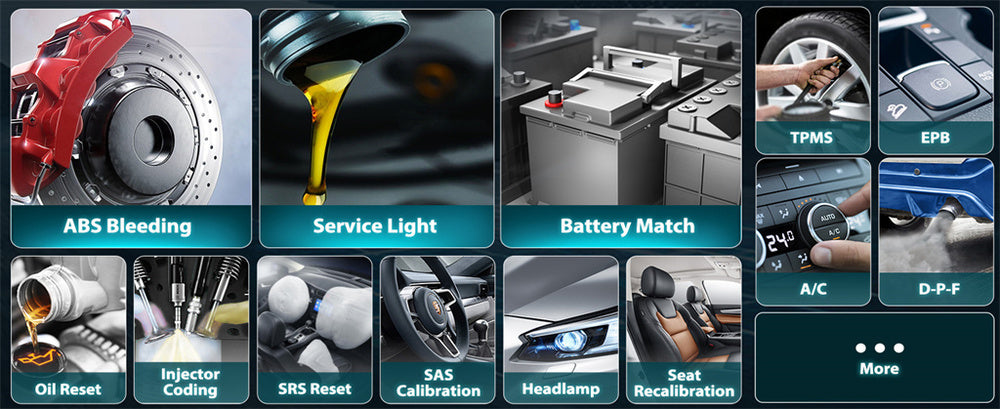If you drive a diesel vehicle, you are likely familiar with its diesel particulate filter (DPF). This filter is integral in keeping emissions clean, trapping soot, and cleaning your exhaust.
However, over time, the DPF may become clogged up; cleaning itself out properly could prevent issues with your engine.
Usually, this would happen automatically via regeneration, where the DPF heats up to burn off soot, but sometimes, this doesn't happen as planned, and manual regeneration must be initiated manually by you or another driver.
I will walk you through how to manually initiate DPF regeneration, including what conditions need to be met, the required tools, and safety considerations.
Whether you prefer DIY solutions or wish to avoid expensive trips to the mechanic, this guide is here to help you complete it successfully.
Step-by-Step Guide to Manually Start DPF Regeneration

Your diesel particulate filter (DPF) filters all the harmful gases from your exhaust. Still, when it gets clogged up with dirt and particles, it needs an excellent deep cleanout - here's how you can manually initiate DPF regeneration:
- Before Beginning: Review Your Vehicle Manual: Before undertaking any action, first consult your car's owner manual.
Each car maker has its own system for dealing with DPF regeneration; therefore, it's crucial that you follow their instructions as much as possible.
- Assure Proper Engine Conditions: Before beginning any exercise routine, ensure your engine has reached its average operating temperature.
Also, verify that at least a quarter of your fuel tank remains full; you'll need the extra energy to burn away soot deposits.
- Apply a Diagnostic Tool: To begin regeneration, an OBD2 scanner will likely be necessary. Plug it into the port under your dashboard and navigate the scanner's menus.
- Locate and Navigate the Tool's Menu: Once connected, locate and select the DPF service or regeneration option under the Engine or Emissions section of the Tool's menu.
- Launch Regeneration: To initiate regeneration, follow the prompts on your scanner. Keep your engine running while the regeneration occurs - don't turn off your vehicle while it works.
- Monitor the Process: Regeneration can take anywhere from 10 to 30 minutes, depending on how much soot has built up. Keep an eye on the scanner to make sure everything is going smoothly.
- Complete the Process: Once the scanner tells you the regeneration is done, turn off the engine and let it cool down before hitting the road again.
Conditions Required Before Starting Manual DPF Regeneration
Prior to manually regenerating your DPF, you must fulfill a few conditions to ensure its smooth running.
First, your engine must be warmed up. Trying to regenerate with a cold engine is like trying to make dinner in an oven—it won't work and will produce unsatisfying results.
As soon as your engine starts up again, closely examine your fuel gauge. Be sure your tank is at least a quarter full; regeneration requires additional fuel to increase exhaust temperature enough to burn away soot deposits.
Running low could result in either no regeneration process taking place at all or halting midway through.
Before beginning regeneration, it is also advisable to check if your vehicle has any active fault codes. If the computer has flagged something incorrectly, rectify this issue before beginning regeneration.
Otherwise, it could prevent the proper completion of regeneration.
Avoid doing this in an enclosed garage as the process produces heat and fumes that could build up there.
Finally, ensure your vehicle is parked with the transmission in park/neutral and the parking brake engaged - this will keep everything secure while the process runs.
Tools and Equipment Needed for Manual DPF Regeneration

To manually regenerate your DPF filter, here is what will be necessary:
- OBD2 Diagnostic Tool: To begin this process effectively, an OBD2 scanner such as the FOXWELL NT710 is essential. Its user-friendly design works with most vehicles.
- Keep Your Vehicle Owner Manual Close At Hand: Keep your vehicle's owner manual handy to prepare for any steps it may require.
- Protective Gear: When working with high temperatures and exhaust fumes, gloves and safety glasses should always be worn for safety.
- Fire Extinguisher: Just in Case. As regeneration involves high temperatures, it is wiser to be safe than sorry.
These tools will assist in getting your work completed safely and effectively.
Safety Tips for Manual DPF Regeneration
Maintaining safety when manually initiating DPF regeneration is paramount, given its complex process of high exhaust temperatures and potentially hazardous emissions release. Here are a few essential safety guidelines and precautions you should be mindful of:
- Avoid Confined Spaces: Never conduct DPF regeneration in an enclosed garage or space due to geneProcesshigh exhaust temperatures that release particulates and gases that could become hazardous in such enclosed environments. Always complete this procedure in a well-ventilated, open environment for maximum safety.
- Keep Away From Exhausts: During regeneration, exhaust systems can reach temperatures as high as 600degC (1118degF). Avoid standing too near an exhaust outlet to protect yourself and avoid potential burns and injuries caused by hot gases.
- Monitor the Process ContiProcess: As soon as you've begun DPF regeneration, monitor your vehicle and diagnostic Tool to ensure the process is preprocessing as anticipated, and be prepared to intervene quickly if anything seems amiss.
- Have a Fire Extinguisher Near: Although rare, DPF regeneration carries the risk of fire. By having an extinguisher nearby, you can quickly respond to any unexpected situations.
- Follow All Manufacturer Instructions: Always abide by the specific instructions from your vehicle manufacturer, as each vehicle may have specific procedures or precautions that must be observed.
Conclusion
Manual PDF regeneration can be simple. By following these steps and prioritizing safety, you can start DPF regeneration manually and keep your DPF and engine healthy and efficient.
Regular attention paid to your DPF can save costly repairs and ensure your diesel vehicle runs efficiently - meaning that the next time your filter needs cleaning, you know exactly what steps to take!
FAQs
Can I regenerate my DPF filter myself?
Yes, you can regenerate your DPF filter yourself using an OBD2 scanner and following the proper steps. Ensure your vehicle meets the necessary conditions, such as the engine being warmed up and the fuel tank being at least a quarter full.
How do I manually start DPF regeneration?
To manually start DPF regeneration, connect an OBD2 scanner to your vehicle, navigate to the DPF regeneration option in the scanner's menu, and follow the prompts to initiate the process. Make sure the engine is running and all conditions are met.
How many times can a DPF be regenerated?
A DPF can typically be regenerated multiple times, depending on the condition of the filter and how well it's maintained. However, over time, the filter may wear out or become damaged, requiring replacement.




Leave a comment
This site is protected by hCaptcha and the hCaptcha Privacy Policy and Terms of Service apply.